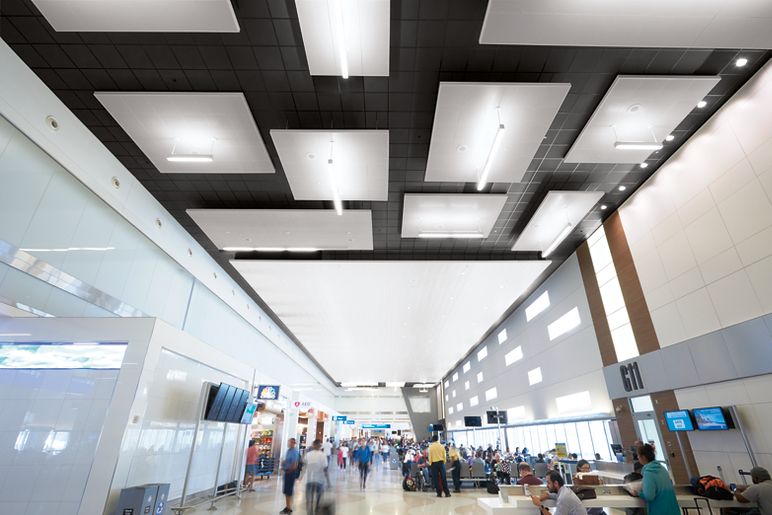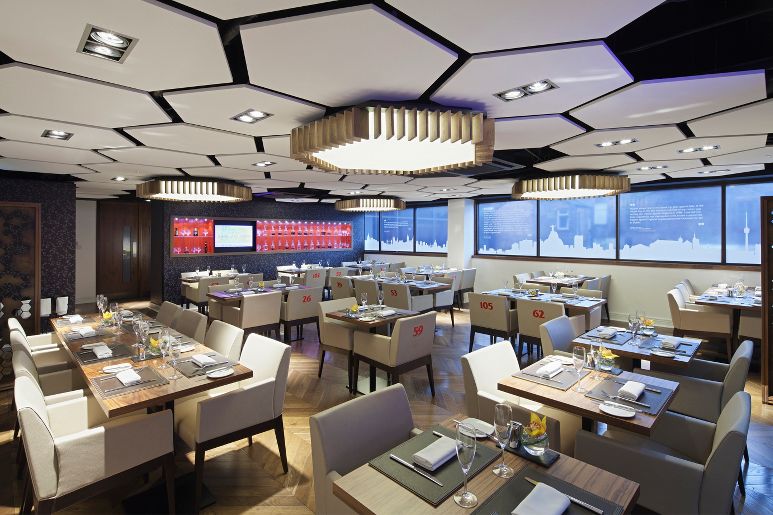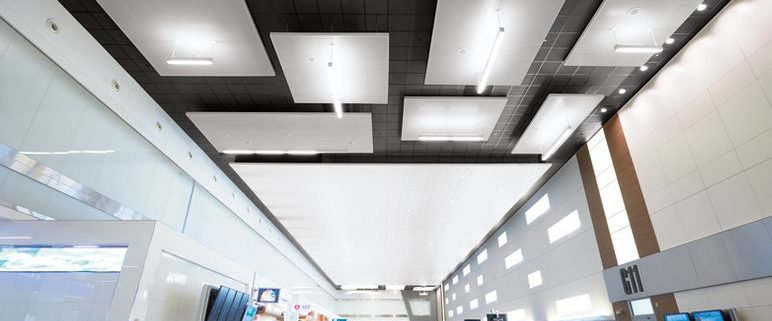Acoustical Tile – it’s not what it used to be!

Fort Lauderdale Airport Terminal – www.armstrongceilings.com
Acoustical tile is not the unattractive product of the past. Advances in manufacturing, materials, and technology have led to vast improvements in recent years. High-profile commercial construction projects feature innovative tile products that are attractive, improve acoustics, and incorporate renewable materials. On your next commercial/industrial project, consider using acoustical tile – it’s not what it used to be!
Development of acoustical tile
The origins of acoustical tile date way back into the 1300’s, when dropped ceilings and ceiling tiles were used in Japan for aesthetic reasons. Much later, tiles were used for their acoustical properties.
It was popularized in the 1960’s when accessible suspended ceiling systems were developed. The basic white tiles served to hide the building structure and utilities while providing sound absorption and attenuation.
Today, it comes in a wide variety of shapes, sizes, and materials suitable for every project. When selecting acoustical tile for your next project, both building and material considerations should come into play.
Building considerations when selecting acoustical tile
In recent years, manufacturers have responded to a changing architectural market with advances in ceiling and wall products. In particular, a wide variety of size, shape, and material options are now offered. New products include superior sound attenuation characteristics that originally drew us to specifying acoustical tile. Many products now also incorporate recycled content.
Depending on your building project, you may be able to narrow down your choices of ceiling and wall materials. We choose acoustical tile based on several building factors:
- Size and shape of the space
- Aesthetic we are trying to achieve
- Project budget
- Required sound attenuation
- Use of the space
- Proximity to wet areas
- Requirement for recycled content
- Tile suspension system
- Access to structural, electrical, and mechanical elements
- New construction vs. remodeling
- Available natural light

Liverpool Football Club – www.armstrongceilings.com
Product considerations when selecting acoustical tile
Look at the product’s characteristics including its ability to control sound and reduce noise. Consider how it functions as a ceiling or wall assembly, including the support system. Pay attention to the technical criteria that distinguish each product. Select a product manufactured by a reputable company, such as USG or Armstrong. In the long run, a more costly product may incorporate features that pay for themselves.
Selection Criteria
- Sound absorption
- Sound transmission
- Light reflectance
- Appearance
- Cleanability
- Durability
- Recycled content
- Cost, long and short-term
- Mold and mildew resistance
- Fire resistance
- Humidity Resistance
- Ease of installation
- Customization options
- Manufacturer reputation
Acoustical tile is not the product it used to be. Advances in manufacturing, materials, and technology have led to vast improvements in recent years. You should consider both building and product characteristics when selecting acoustical tile for your next commercial or industrial project.



